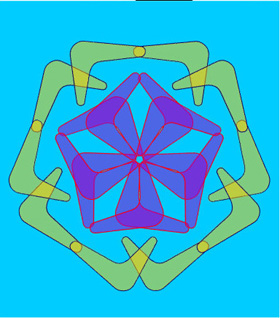
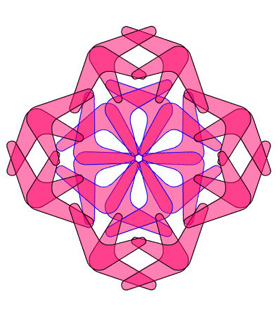
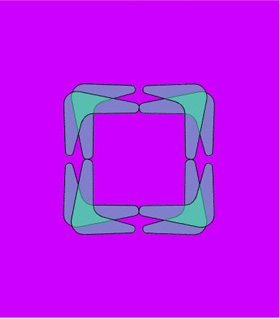
Code: 2B - 10E( f ) - Y
Code: 2B - 3B( f ) - Y
Code: 2B - 3B( f ) - R
Code: 2B - 1E( f ) - B
Code: 2B - 10E( f ) - B
Code: 2B - 9D( f ) - B
|
Back to home page Use Interactive Interface to Design and CODE ... 'Kaleidoscope Patterns' |
|
|
|
Code: 2B - 10E( f ) - Y |
Code: 2B - 3B( f ) - R |
Code: 2B - 9D( f ) - B |
|
Examples of patterns designed using the 'Kaleidoscope Patterns Interface': |
|
Hyperlinks ... |
| |||||||||||||||
|
A Kaleidoscope Pattern is the combination of 2 patterns being the mirror image of each other
The difference in the CODES is that the Flip CODE includes 'f' in the Location ...
11Cf | |||||||||||||||
|
The Interface allows for 3 separate patterns to be designed and stacked upon each other
Each pattern is on its own 'Layer' and colors can be selected from a 'Color Palette' to color the shapes
A different color can be selected for the face and flip shapes and a background color for Layer 1
A 'Hexadecimal Code' can be entered in lieu of using the 'Color Palette'
| |||||||||||||||
|
| |||||||||||||||
|
Example of the 'Kaleidoscope Interface' with the above 3 patterns entered at Layers 1, 2, and 3
LINK:
This pattern will be achieved by following the Screen Shots ( 1 - 8 ) |
|||||||||||||||
|
Interactive Activity - Design Kaleidoscope Patterns |
|
Tutorial using Active Interface:
Follow the instructions as set out in the Interface and work with the Screen Shots ( 1 - 8 ) |
||||
| ||||
|
|
|
How to color your kaleidoscope patterns ... Instruction Nos. 1 - 8 |
||
|
1 |
Click on 'Color Palette' Layer1 |

|
|
2 |
Click on one of the 30 colors in the Color Palette grid |
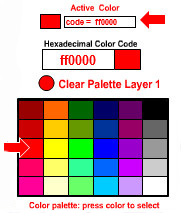
|
|
3 |
Click on 'Color Face shapes' |
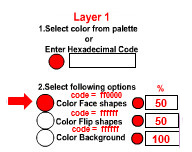
|
|
4 |
Click on 'Color Flip shapes' |
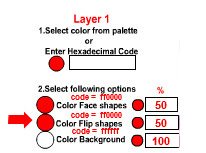
|
|
5 |
Click on a new color 'Blue' ... hex code 0066ff |

|
|
6 |
Click on 'Color Background' |

|
|
7 |
Click on 'Color Palette' Layer 2 |
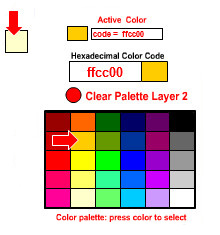
|
|
Color face and flip with hex code ffcc00 |
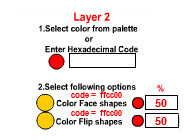
|
|
|
8 |
Click on 'Color Palette' Layer 3 |
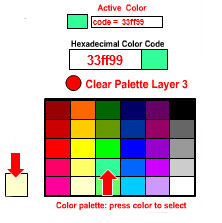
|
|
Color face and flip with hex code 33ff99 |
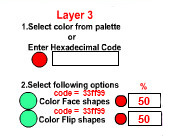
|
|
|
|